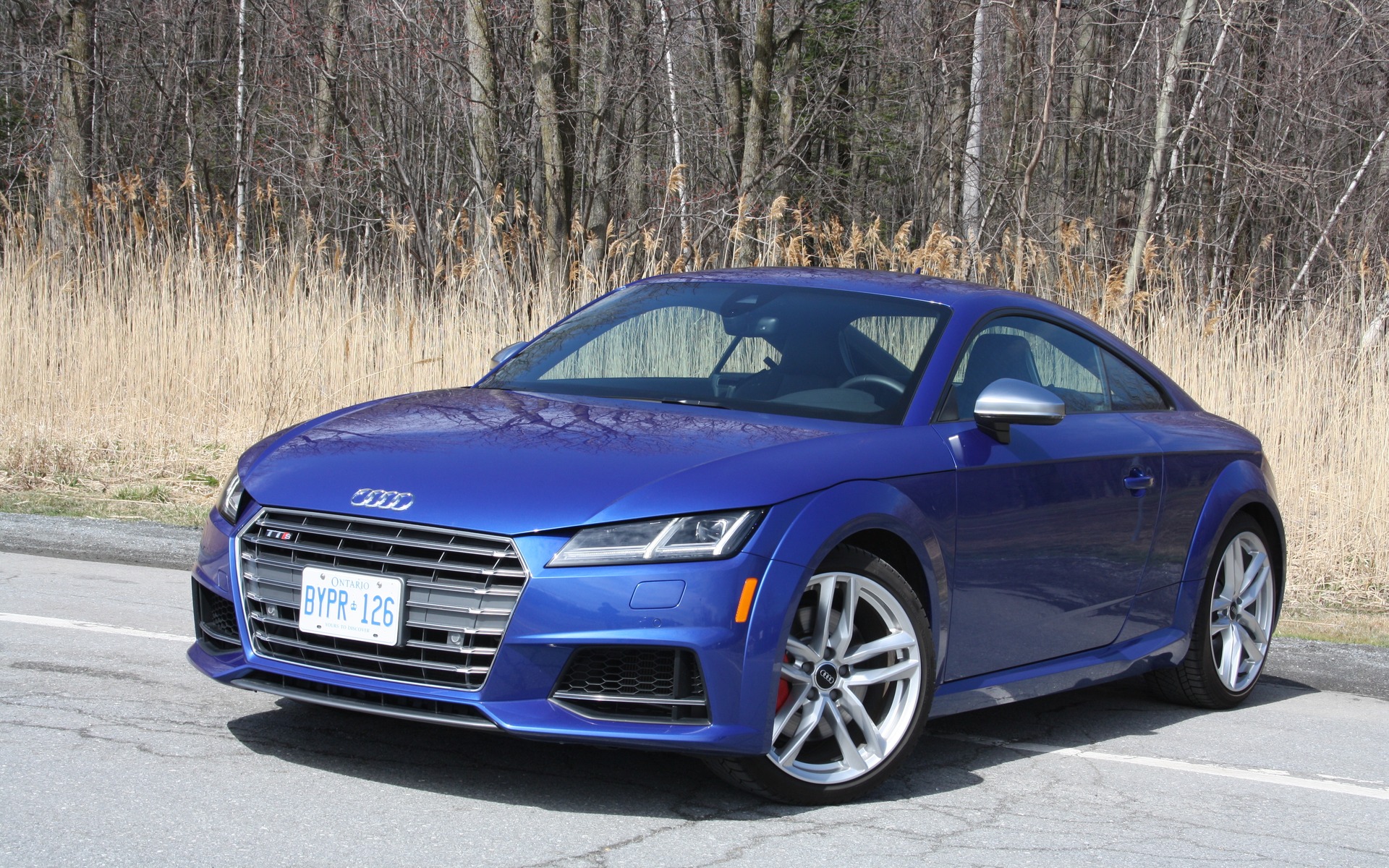2016 Audi TTS: Sharper Claws


The TT has been part of Audi’s sports-car lineup since 1998, and over time, it has matured into a serious machine. While the first generation-car was stylish and offered decent performance, its handling improved significantly since then. Today’s TT, totally redesigned for the 2016 model year, is a refined and sophisticated beast.
It competes against other German metal such as the Mercedes-Benz SLC, the BMW Z4 and the Porsche 718, in either Boxster or Cayman configuration, or against the Alfa Romeo 4C. Once again, the TT is available in four-passenger coupe and two-seat Roadster body styles, although in Canada, the TTS, subject of our test, can only be ordered as a coupe.
Read also
2.0 TFSI or bust
Under the hood of each TT lies a turbocharged, 2.0-litre four-cylinder engine bolted to a six-speed S tronic, dual-clutch transmission. Performance is great in the base TT versions with 220 horsepower and 258 lb.-ft. of torque, but the 2016 Audi TTS Coupé cranks that up a couple of notches with 292 horsepower and 280 lb.-ft. of twist.
The TTS can blast from 0 to 100 km/h in 4.9 seconds, seven-tenths quicker than the base car. And with the standard quattro all-wheel drive, there are no wheel-spinning shenanigans when punching the throttle—the car just lunges forward. The engine is also efficient, as we observed an average of 9.1 L/100 km over the course of our test.
The TTS is equipped with the brand’s Audi magnetic ride suspension that automatically adjusts damper firmness according to driving conditions. This setup is also affected by the Audi drive select system that offers the driver Auto, Comfort and Dynamic modes.

Despite being built on a front-drive platform, a rear-wheel bias has been dialled in the quattro system for a sportier driving experience while in Dynamic mode. However, when wheel slip occurs, a multi-plate clutch can reassign power to the axle where it senses the most traction. Not only does this all-wheel drivetrain contribute to the car’s excellent handling, but it also allows the 2016 Audi TTS to be a capable winter beater.
On the other hand, the ride is on the stiff side, except on the highway, although the optional, thin-sidewalled 255/30R20 performance tires thump loudly over expansion strips. There just isn’t enough rubber to confront roads riddled with potholes. The same can be said of the TT’s rivals, though.
Driver-focused cabin
The redesigned TT introduced the Audi virtual cockpit that’s making its way into the brand’s other products such as the A3 and the A4. This 12.3-inch LCD screen is configurable in many ways, allowing the driver to have a tachometer flanked by the navigation map (if equipped) and the trip computer, a full map display with small tach and speedometer readings in each lower corner, or to view audio or phone information at the touch of the MMI console- or wheel-mounted buttons.
The Audi virtual cockpit is best enjoyed when the optional Navigation Package is selected. The full-screen map directly in front of the driver’s view is great when you’re trying to navigate through unknown neighbourhoods. However, the other passengers won’t get to see much of it, as there’s no second, dashtop-mounted screen in the TT.
At least the co-pilot can change climate control settings, as their knobs and buttons are cleverly integrated in the centre of the circular air vents. The jet turbine design of those ventilation outlets provides a dynamic enhancement to the tasteful, yet minimalistic dashboard. Every TT gets Nappa leather with sporty, diamond-pattern stitching, power-adjustable and heated seats and a nine-speaker sound system with USB port. A 12-speaker, Bang & Olufsen surround system can be added as an option, which obviously sounds phenomenal.
Oh, and forget about trying to fit passengers in the rear seats without them feeling claustrophobic and requiring front-seat occupants to move their seat forward.
The 2016 Audi TT’s bodywork is definitely a head-turner, especially painted in our TTS test car’s Sepang Blue colour. It adopts a more angular look than the two previous generations of the car, noticeable around the front fascia with a crease that starts at the base of the A pillar, defining the edge of the headlight cluster and grille as it drops down to the bumper.

The LED daytime running lights adopt a crossed-line pattern around the xenon (TT) or full LED (TTS) headlights, which also contribute to the car’s chiselled look. At the rear, a deployable wing increases downforce at highways speeds and amazes passengers in surrounding cars as it raises and lowers itself.
The window sticker
All this style, performance and technology come at a price. If you don’t mind settling for 220 horsepower, the base TT starts at $51,600 before freight and delivery charges, while the TT Roadster is listed at $55,600. Our TTS test car starts at $62K, but a full complement of options raised its final tab by ten grand.
So, TTS or base 718 Cayman? It’s a tough call, but the Porsche is a more visceral beast than the Audi, even though the latter has sharpened its claws. The droptop-only Z4 and SLC feel more like GTs than pure sports cars, while the 4C is a go-kart on steroids that sounds as if it lost its muffler, but that unrefined character gives it plenty of charm. The TTS is almost too tame for its own good, and there’s a reason why it isn’t called the R4, because a half-price R8 it is not, either.
Still, the 2016 Audi TTS is a blast to drive down a sinuous stretch of road, and its gorgeous bodywork will get the stares for years to come. Think of it as the perfectly-balanced sports car of its segment.








